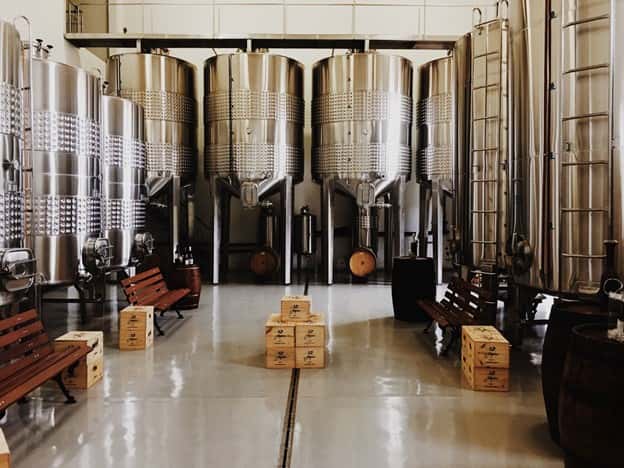
Brewery Business Plan: Getting Started
Beginning a brewery often starts as an idea between friends, the lifelong goal of a homebrewer, or a business venture that a longtime brewer that is ready to start on their own. In all these scenarios, the common thread is passion for beer and a spirit for entrepreneurism. Starting with a strong business plan is the first step to seeing those dreams come true.
How To Find The Best Craft Beer Name
If you’ve ever had daydreams of naming dogs, babies, or hypothetical cover bands, you know the excitement of finding the perfect name that will make its mark for years to come. Naming beers can come with that same excited anticipation or be shrouded in anxiety as you search for the perfect words to represent your beer.
Not only are names a fun way to speak to your brand and product, but it’s also a requirement. In some states such as North Carolina individual beers must be registered with their “fanciful name” (which simply means the name of the specific beer being registered) in order for the beer to be distributed or for off-premise sales.
So how does one go about naming a beer that entices drinkers to choose you above the competition?
4 Reasons Why Self-Pour Technology Is a Great Addition
This is a guest post from our friends at PourMyBeer, a next-generation self-pour beverage system with over 8,000 taps in 24 countries. Having installed the most taps out of any self-pour tech providers in 2019 and 2020, PourMyBeer helps us understand the direct benefits of this technology.
As beverage companies continue to return to business as usual, innovative self-pour beverage technology could be a unique solution to decrease labor and increase profits. For customers self-pour beverage walls allow guests the freedom to pour their own beer, wine, cocktails, cold brew, and kombucha whenever they want and pay by the ounce. For operators self-serve technology increases beverage sales, simplifies operations, boosts serving efficiency, and reduces waste.
Here at PourMyBeer, we have seen the rise in self-service technology across all industries. In fact, a market analysis report done on the self-serve technology market size found, “The global self-service technology market size was valued at USD 28.3 billion in 2019 and is expected to grow at a compound annual growth rate (CAGR) of 6.7% from 2020 to 2027.” Specifically, the restaurant industry has benefitted greatly from self-pour service. The reason why? This technology creates more efficient and simplified operations, saves operators money, and increases profits.
So, why should you consider self-pour beer? It just makes sense!
Let’s dive into four reasons why you should have a self-pour beer wall in your bar or brewery:
Shipping Beer 101: Brewer Edition
Whether your brewery is up and running or you’re just in the process of getting your name out there, it’s understood that you probably want to get your beer into as many hands as possible. Sometimes, this takes the form of local festivals and events. Other times, you may look to do a tap takeover in a different city or want to do an out-of-town festival. Aside from personally delivering your beer, how do you get your beer from place to place? Many times, common questions around beer shipping and transport that may keep some breweries from taking the plunge.
At one point in a not-so-distant past, when certain rare and well-loved beers were next to impossible to get (like Cigar City’s Hunahpu Imperial Stout and Bell’s Hopslam), due either to a limited production or a lack of nationwide availability, consumers paved their own way when procuring their desired beverage. They traded products amongst themselves, shipping (largely illegally) from all over the country to ensure they got their hands on hard-to-come by brews.
Shipping in unconventional and unideal modalities, often with a lack of proper insulation and a fingers-crossed method of packaging, has made it hard to determine how to ship beer legally and safely, while also ensuring the quality and integrity of the beverage.
For businesses to ship beer or alcohol, there’s a bit to understand, from techniques to pricing. Learn the ropes and you can make decisions on how to ship your beer safely and securely from your brewery to consumers across the nation — and the world!
What Are Cocktails On Tap & How Will They Make My Business More Money?
Last year, the global COVID-19 pandemic forced many bars, restaurants, taprooms, and breweries to shut down, changing the industry and drinking culture completely. As consumers were forced to drink at home, businesses turned to various strategies to keep the revenue flowing. One of these was serving batch cocktails to go.
According to a Bacardi Limited 2021 annual Cocktail Trends Report with external research commissioned by Nielsen CGA, ready-to-drink beverages such as canned cocktails grew 131 percent in the U.S. market.
Now, as people start safely returning to their barstools, they’re looking for more creative and experimental ways to consume their mixed drinks. Cocktails on tap are an innovative way to serve hard beverages — and they have a huge amount of benefits. From being more efficient than regular cocktails, to requiring fewer employees to serve, lowering operational costs, and increasing profits, cocktails on tap are a smart, viable strategy for any bar, restaurant, brewery, or taproom, especially as businesses across the country continue reopening.
The Three Best Beer Tap Systems
Updated: 2/3/22
I’m sure I’m not alone in that when I’m out for a beer at a bar or brewery, I want something on draft. It’s a special experience to watch a beer poured with a perfect head then slid across the bar to my grasp. This feeling is why many people open bars and breweries in the first place — along with the love for the beer industry and craft beer.
In order to make the right decision for how to best serve up a frosty one at your venue, you have to know the pros and cons of different tap systems.
Whether you’re looking to install a totally new system, or upgrade your existing taps, there are a few options that range in monetary and spacial cost. The three systems we’ll be diving into are: the kegerator, direct draw, and long draw tap systems.
Craft Beer Mobile Canning – Pros & Cons
In the modern craft beer landscape, packaged product is king. Small, newly opened breweries have prioritized not only offering consumers a space to drink their beer on-site, but the opportunity to bring that beer home. Growlers and crowlers offer ad hoc solutions to the packaged product dilemma, but they can be time and labor intensive. Plus, aluminum has overtaken glass as brewers continue to switch to crowlers and/or 16 oz. aluminum cans over growlers and 12 oz. bottles.
In fact, the National Beer Wholesalers Association reported that canned beer “accounted for 60% of all beer sold” with glass bottles accounting for 30% and kegs 10%. So, eventually, a brewer will have to consider the optimal way to package their beer.
Over the last few years, several mobile canning companies have hit the market offering brewery owners flexibility and ease in packaging their beer. These mobile canning solutions can offer significant upsides but there are certainly drawbacks to outsourcing your packaging needs.
We’ve pulled together resources and expert advice to put together a list of the pros and cons of the mobile canning processes. Over the next section, we will be discussing all of the pros of mobile canning.
The Beer Community Shows Resilience During Pandemic
Small businesses are more than an important driver of our economy, they are part of the fabric of a neighborhood, of community. 2020 was a tough year for small businesses, and the neighborhood brewery was no exception. But we have seen stories of perseverance and resilience, of community and support, that helped keep many of these small businesses going during difficult times.
At Untappd, we are committed to being a partner to the breweries, bars, restaurants, and retail locations where craft beer drinkers come to learn, share, and purchase the world’s most enjoyed fermented beverage. Today, we share stories from some of our craft beer partners across the U.S. who found innovative ways to stay the course during the COVID pandemic.
In some cases, tap rooms and bars were able to serve a limited number of customers on-premise, in others, they shifted to ecommerce and to-go service. To support our brewery partners and our more than 9 million registered Untappd users around the world using the app to check-in beers, Untappd introduced its Untappd at Home venue, allowing users to continue to enjoy the social aspect of sharing a beer with friends – virtually.
For these community brewers, finding a way to continue to serve their employees and the community required some creative approaches.
